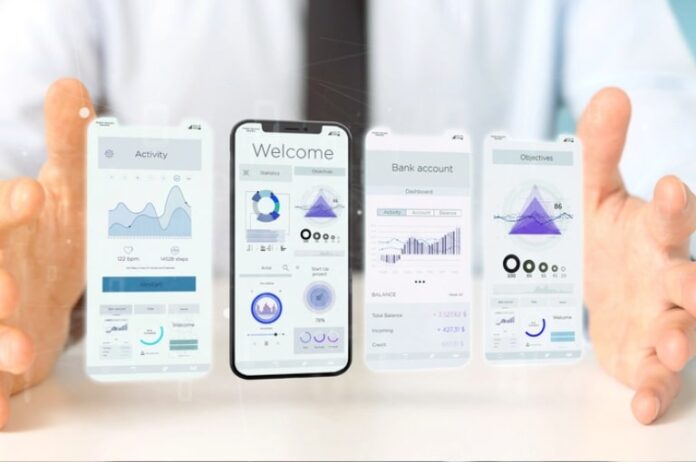The advent of modern technology has led to the creation of a slew of digital products that we interact with daily. From social media platforms to apps and websites that allow us to connect, stay entertained, or even complete errands like shopping, these digital products have a way of catching us hook, line, and sinker.
Aside from the convenience and entertainment they provide, one of the key reasons they can captivate our attention and keep us engaged is their specific and intentional design choices. These, carefully curated by knowledgeable designers, serve the purpose of helping these products integrate more easily and consistently into our lifestyles.
Below, we look at the most common tricks that app, website, and other platform designers use to ensure that we remain engaged for longer.
Engaging Visuals
The visuals presented within a digital product are the most effective means of encouraging engagement and continued use. For many, interacting with an app or website that looks dated or boring will immediately create a desire to find something better. Due to this, designers spend significant effort on developing the best, attention-grabbing visuals.
Color Psychology
Different colors work as powerful psychological triggers that can evoke specific emotions or even guide us to perform certain actions. Because of this, designers often work very intentionally when deciding what colors to use in a design so that they can carefully craft a visual experience that draws users back.
Hues of blue are often used to foster feelings of trust, reliability, serenity, and confidence. As such, blue is commonly found in the branding or visuals of financial organizations, tech companies, or within large corporations that seek to garner community engagement.
In contrast to relaxing blues, many e-commerce websites employ red because it inspires feelings of excitement, energy, passion, and urgency. For this reason, many call-to-action buttons, like “Buy Now,” are red.
Other common colors used specifically for the feelings they inspire are green (nature, relaxation, and growth), orange (excitement, warmth, and creativity), and yellow (joy, optimism, and attention).
Motion Cues
Aside from using colors to instill specific feelings, designers also know that we notice movement, whether consciously or subconsciously, when our eyes see it. This knowledge has led to the incorporation of micro animations or transitions, referred to in the industry as motion UI.
Like colors, these micro animations make us feel more connected to the platform we’re dealing with and provide a sense of response from the site, similar to haptic feedback on a video game controller.
An animation of a button depressing when clicked or tapped can help provide certainty that user input has been recognized, and a smooth transition from one webpage to another can make our experience with a website feel more fluid. These help us feel more comfortable using a digital product, which, in turn, leads us to spend more time doing so.
Motion cues or motion UI are also heavily employed by designers to draw attention to areas they want our focus to fall on. From sale buttons or banners that very slowly grow larger or smaller to the smooth movement of an item into our online shopping cart, these animations draw our attention.
Variable Feedback
Although used in ways other than visually, variable feedback is also heavily employed as a visual cue to boost engagement with a site. As such, designers spend significant time developing a feedback loop with various outcomes for a specific action or engagement with a platform.
One example of variable feedback is if you visit an e-commerce clothing website at different times of the day. In the morning, the website may boast lighter colors and showcase running outfits that encourage going jogging.
Visiting the same website at night may show more muted tones that would be easier on the eyes in a dark room and showcase the latest sleepwear for a comfortable night of rest.
Another prime example of variable feedback is the casino slot machine, which provides excitement and encourages continued interaction due to its unpredictability.
In essence, variable feedback aims to channel the human desire for anticipation and change. By making slight design changes, digital products can ensure that we do not become bored because the experience has become monotonous and predictable.
Beyond the Visuals
Aside from visual tricks that foster engagement, developers have turned to other methods that are more practical and drive increased interaction. Chief among these methods is gamification, which uses game-like elements within non-game contexts.
Through the use of game-like features ranging from leaderboards to achievement systems, designers are able to create platforms that encourage more engagement. These features are also commonly linked to visual tricks that make the impact more significant.
Although used in various settings, from teaching to marketing, two prime examples of gamification as a method to drive engagement are certain e-commerce websites and social casinos.
E-Commerce Gamification
Some e-commerce platforms have adopted gamification as a method to deliver discounts, coupons, and rewards to regular shoppers. Rather than delivering these via email, as was the traditional method, they now deliver them by requiring shoppers to spin a wheel or compete in a mini-game.
Moreover, some online stores have created achievement systems, where you may be rewarded for shopping more than a specified number of times within a month. Once you have achieved this requirement, you will unlock additional discounts or exclusive offers, many of which will encourage you to try to achieve the requirement again the next month.
Social Casinos
Social casinos use a play-for-fun virtual currency rather than actual currency like real-money casinos. However, like some e-commerce platforms, these types of entertainment sites rely on gamification to encourage repeat engagement among users.
By replicating the thrill of real-money wagering, social casinos utilize games to foster excitement and unpredictability. This can encourage you to keep playing to see if you can win the offered jackpot, but it is a response carefully crafted by the platform’s designers.
Conclusion
Keeping visitors and customers engaged with a digital product is one of the most challenging tasks that designers face. However, by employing various visual and non-visual tricks, designers can craft memorable user experiences that encourage repeat visits from users.
With these tricks prevalent on many websites and platforms, knowing how to recognize when a designer’s choices are influencing you may help you more carefully discern how much time you want to spend engaging with their products or services.




